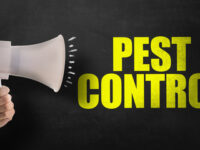Winning The War On Pests – Tailored Solutions For Every Home
Since the first pea farmer squished a cutworm from his seedlings, growers have been fighting to keep pests away.
Pests are more than just insects that eat plants: they can also spread diseases and interfere with plant growth. Apex Pest Solutions targets rats, flies, mosquitoes, and sparrows for elimination.
 Pest Identification
Pest Identification
Pest identification is the first step in developing an effective pest control strategy. Pests may look different depending on their age and stage in the life cycle. An immature beetle might look like a caterpillar or worm. Different species of plants also have similar structures that can be difficult to distinguish from one another. Correctly identifying pests allows you to tailor your management tactics to target the specific physical forms that are most vulnerable.
Pests that cause damage to crops or other property are known as economic pests. These pests are controlled when their numbers reach a point where the damage they cause becomes significant or when the loss is expected to exceed an economic threshold. Other pests may interfere with human activities by causing nuisance or annoyance and do not require control at the current time. Regulatory pests are those that pose serious threats to the health and safety of crops and livestock. Typically, these pests are regulated by federal and state agencies using quarantine, eradication, or other methods to contain or eliminate them.
In addition to determining the type of pest, careful observation should be used to determine the cause of the pest problem. Many times non-living things (such as weather extremes, air pollutants, or excessive fertilization) can cause plant damage that is mistaken for pest damage. Other causes of damage can include disease, parasites, or weeds.
A flashlight is a very useful tool in pest scouting, as pests often live or seek shelter in dark, secluded areas. An extendable mirror can help you get a good look at hard-to-reach areas behind and underneath equipment or furniture. A magnifying glass is also helpful in examining plant parts and frass (excrement) for evidence of pest activity.
Integrated Pest Management (IPM)
IPM is a method of pest control that reduces chemical usage and maximizes sustainability. It focuses on preventative methods such as sanitation, habitat modification, and monitoring, while also using pesticides sparingly when necessary. IPM is widely used in agricultural settings but is becoming increasingly popular among homeowners as well. It can be a more effective method of pest control than traditional methods and is less costly. It can also reduce the risk of environmental contamination and minimize the exposure of children and staff to pesticides.
In an IPM plan, non-chemical controls are tried first to reduce the population of the pests and the damage they cause. This may include adjusting the planting schedule, mulching, and other cultural practices. It could also include trapping or removing the pests themselves, or the deliberate release of predators and parasitoids. When these measures prove ineffective, more aggressive pest control methods can be employed, such as targeted or broadcast spraying of chemical controls.
The goal of IPM is to suppress pest populations below the level that causes economic injury. Monitoring, identification, and action thresholds guide the decision to use each control measure. This reduces the likelihood that pesticides will be applied when they are not needed, or that the wrong type of pesticide will be used.
As IPM becomes more common, many pest control manufacturers have developed products that are safer and more effective than traditional chemicals. This is not only good for the environment, but also for human health and the bottom line. Pest management professionals must be knowledgeable of the different options and be able to advise clients on which approach is best for their situation.
Pesticides
Pesticides are substances or mixtures used to kill, repel, control, or prevent pests (insects, rodents, weeds, mildew, and microorganisms) in crops, gardens, homes, and lawns. They are found in spray cans and crop dusters, in household cleaners and hand soaps, and swimming pools. There are more than 1000 different pesticides used worldwide. Some are toxic to people. Insecticides are the most acutely toxic to humans, while herbicides and fungicides present a greater chronic risk. They all work by disrupting the enzyme cholinesterase, which regulates the neurotransmitter acetylcholine in nerve cells, causing paralysis. Others are more persistent, like organochlorines, and cause a variety of health problems including cancer, Parkinson’s disease, infertility, and endocrine disruption.
Pesticide use can also harm the environment by contaminating water and soil. It is important to minimize the amount of pesticides used, and always read and follow label instructions. It is also a good idea to try non-chemical methods first.
The objectives of pest control are prevention – keeping the pests from becoming a problem, suppression – reducing the numbers to an acceptable level, and eradication – killing the entire population. The cheapest and most effective way to manage a pest problem is through prevention.
Mechanical controls include traps and snares. Examples in the home include mouse traps and flea control for pets. Cultural and physical controls remove things that attract pests – for example, removing plants they need to thrive, or plowing and tillage to control weeds. Biological controls are natural enemies of the pests – for example, lady beetles and lacewings that prey on garden weeds, or wasps and flies that control rodents. Chemical controls are poisonous to the pests and include sprays and baits.
Baits
Baits are attractive food products that contain insecticide-active ingredients and are placed in places where pests congregate. The pests take the bait ingest it, and subsequently die. Baits are used to control rodents (rats and mice) and ants, cockroaches, and termites. The products against cockroaches and ants are often gel-like, while those against rats and mice are primarily grains to which the active ingredient has been added. It is important to use baits with care and in conjunction with other management practices; failure to do so can result in resistance to the product.
Rodent baits are a useful tool to reduce activity around the home, but they should not be the sole method of control. It is vital to address other potential entry points, such as roof intersections, soffit vents in disrepair, crawl space vents that are torn or missing, or A/C chases that are open. In addition, a rodent infestation may need to be trapped before it can be effectively managed with baits.
When using rodent bait, it is crucial to protect the receptacles from other animals and pets (including squirrels). This can be done by sealing the container or placing it inside a bait station. In addition, it is necessary to use baits with caution in areas that have high weed or grass coverage. These areas can provide a hiding place for rodents and lead them into your home.
Insect baits are a great option for controlling termites in residential structures. They can be a stand-alone treatment or they can be supplemented with liquid barrier treatments, such as Trelona Advance. Unlike the liquid barriers, which are applied under and around the structure, termite baits are designed to be inserted into the ground beneath and around the building.
Prevention
The most efficient way to deal with pests is to keep them from invading in the first place. Preventative control methods primarily involve keeping the pests away from a property through careful monitoring and routine actions. These include keeping entry points sealed, removing trash regularly, and eliminating clutter where pests may hide.
Pests usually thrive in conditions that favor their growth, reproduction, or survival. Often, the conditions needed can be predicted with enough knowledge. For example, soil-borne fungus diseases that affect crop plants typically require specific environmental conditions for development. Knowing these conditions allows them to be prevented by adjusting the environment or changing the planting schedule. This prevents the diseases from invading desirable crops and reducing their yields. Early releases of beneficials can also prevent the onset of plant diseases, such as fungus gnats and thrips. The predatory mites Stratiolaelaps and Amblyseious fallacies can help control these pests in the larval stage, preventing them from damaging the plant.
Other factors can be controlled to limit the number of pests, such as temperature and moisture levels. Monitoring helps identify the amount of damage being caused and when to start controlling the pests. Pest numbers should be reduced to a level that is acceptable before starting a control program.
A pest infestation that is allowed to develop will be much harder and more costly to eliminate than one that is stopped early in its tracks. In addition, if an infestation is allowed to continue, it will be more difficult to eradicate the pests once they have matured and spread into new areas. Prevention is the most economical and environmentally responsible form of pest control. It allows technicians to focus on treating only those pests that need to be dealt with rather than tackling large numbers of pests that have already developed into more troublesome and destructive populations.






